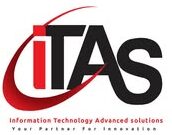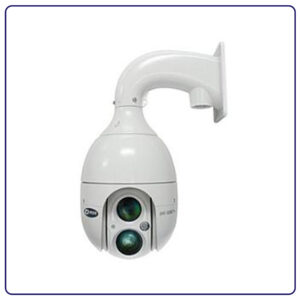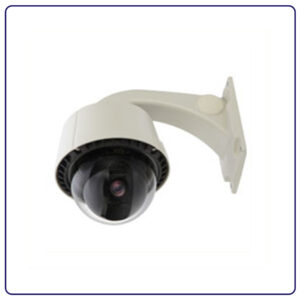CCTV Surveillance Systems in Egypt
Our Brands
CCTV in Egypt
At ITAS Technology, we are committed to providing advanced CCTV in Egypt solutions tailored to your needs. We combine expertise with cutting-edge technology to ensure the highest level of security and protection. Here’s an overview of our CCTV in Egypt services:
We offer a wide range of cameras and devices with advanced technologies to ensure clear visibility in all conditions across Egypt.
2. Customized Planning and Design:Our team works closely with you to accurately understand your needs and provide a customized CCTV in Egypt solution that meets your unique requirements.
3. Professional Installation and Regular Maintenance:We take pride in our professional installation team, ensuring optimal performance, along with regular maintenance services to guarantee the continued efficiency of your CCTV in Egypt systems.
4. Advanced Technology and Technical Support:We utilize the latest technologies and provide exceptional technical support to ensure your complete comfort and benefit from our CCTV in Egypt systems.





Data and Power Cables in CCTV in Egypt Systems
Data and power cables are a vital part of CCTV in Egypt systems, ensuring effective communication between the cameras and the recording or monitoring stations. These cables provide reliable transmission of both power and data, helping the system function efficiently and securely.
Types of Cables in CCTV in Egypt Systems
- Power Cables: Connect surveillance cameras to power sources. These cables vary in size and configuration depending on the camera’s voltage and distance from the power source.
- Video Cables: Used to transmit video signals from cameras to recording devices. Common types include RG59 and RG6 coaxial cables, often paired with BNC connectors for analog CCTV in Egypt systems.
- Control Cables: Required for PTZ (Pan-Tilt-Zoom) cameras and other advanced models to send control signals from the system to the camera unit in Egyptian installations.
Design and Quality
The performance and reliability of CCTV in Egypt systems heavily depend on the quality of cables used. High-quality cables feature strong insulation, shielding, and durability to resist interference, high temperatures, and harsh environmental conditions.
Installation and Maintenance
Proper installation of cables is crucial for optimal system performance in CCTV in Egypt. This includes accurate routing, labeling, grounding, and securing of all connections to prevent signal loss or noise. Routine maintenance is recommended to inspect for wear, damage, or degradation, ensuring continuous and stable operation.
Technological Advancements
As surveillance technology evolves, modern CCTV in Egypt systems require cables that can handle higher data transmission rates and support advanced functions like high-definition (HD), Ultra HD (4K) video, and IP-based camera communication. Structured cabling solutions like Cat5e, Cat6, and fiber optic cables are now widely adopted for IP surveillance networks in Egypt.
Surveillance Cameras in CCTV in Egypt: An Essential Part of Security Systems
Surveillance cameras play a vital role in modern CCTV in Egypt and monitoring systems across homes, businesses, and public spaces. Different types of cameras are used depending on security needs, environment, and desired features. Below is a comprehensive overview of common CCTV in Egypt camera types:
Types of Surveillance Cameras
- Analog Cameras: Utilize analog signals transmitted over coaxial cables to a DVR. While budget-friendly, they typically offer lower resolution than digital options in CCTV in Egypt systems.
- Digital Cameras: Also known as IP cameras, these transmit data digitally over networks, providing high-definition footage and remote accessibility for Egyptian installations.
- Infrared (IR) Cameras: Capture footage in low-light or total darkness using infrared LEDs. Ideal for nighttime monitoring in CCTV in Egypt systems.
- Wide-angle Cameras: Equipped with wide lenses to cover broader areas such as parking lots or open halls in Egypt.
- PTZ Cameras (Pan-Tilt-Zoom): Allow remote directional and zoom control, ideal for large areas requiring detailed surveillance in CCTV in Egypt.
- IP Cameras (Internet Protocol): Offer advanced features such as cloud storage, mobile access, and AI integrations via internet connectivity for Egyptian clients.
- High Definition (HD) Cameras: Provide crystal-clear resolution for detailed monitoring and better image analysis in CCTV in Egypt systems.
- Facial Recognition Cameras: Identify and verify individuals by comparing facial features with a database in Egyptian security setups.
- Thermal Cameras: Detect heat patterns, enabling visibility in complete darkness, smoke, or fog as part of CCTV in Egypt.
- Smart Analytics Cameras: Use AI to recognize suspicious behavior, motion anomalies, or specific events in real-time in CCTV in Egypt systems.
- Audio Surveillance Cameras: Equipped with microphones to capture ambient sound for enhanced situational awareness in Egypt.
- Industrial Cameras: Built to withstand extreme conditions, suitable for manufacturing, mining, or heavy-duty operations in CCTV in Egypt.
- Panoramic Cameras: Offer 180° or 360° field of view, minimizing blind spots with a single device in Egyptian installations.
- Underwater Cameras: Waterproof and pressure-resistant, used in marine environments or for pool surveillance in Egypt.
- Low-Light Cameras: Optimized for environments with minimal lighting, using advanced sensors to produce visible images in CCTV in Egypt.
- 3D Cameras: Capture spatial depth and dimensions, often used for motion tracking and object measurement in Egyptian systems.
- Dynamic Wide Dynamic Range (DWDR) Cameras: Balance exposure in scenes with both bright and dark areas, ideal for backlit entries or windows in CCTV in Egypt.
- Auto-Focus Cameras: Continuously adjust focus to maintain sharpness on moving objects or shifting scenes in CCTV in Egypt.
- Optical Zoom Cameras: Enable users to zoom in and out without losing image quality, perfect for critical inspections in Egypt.
- Self-Inspecting Cameras: Feature automatic diagnostic checks to alert users of issues and maintain consistent performance in CCTV in Egypt systems.
Choosing the right surveillance camera depends on location, lighting, coverage area, and required features. A well-designed CCTV in Egypt system often includes a mix of camera types to ensure full situational awareness and enhanced security.
ITAS Technology: Leaders in Advanced DVR/NVR Solutions for CCTV in Egypt
ITAS Technology proudly stands at the forefront of innovation in DVR (Digital Video Recorder) and NVR (Network Video Recorder) solutions for CCTV in Egypt. With a commitment to security and performance, we deliver powerful and efficient surveillance technologies designed to meet the needs of modern environments in Egypt.
Modern DVR/NVR Technologies
At ITAS, we provide the latest advancements in both DVR and NVR systems for CCTV in Egypt:
- DVR (Digital Video Recorder): Traditional analog-based systems ideal for use with coaxial camera networks, offering cost-effective yet reliable video recording in Egyptian installations.
- NVR (Network Video Recorder): Modern IP-based systems that work with digital network cameras, allowing for higher resolution, remote access, and enhanced scalability across CCTV in Egypt setups.
All our systems are equipped with intelligent features, robust performance, and advanced analytics to support proactive security management in Egypt.
Features of Our Products
- Exceptional Performance: High processing power and efficient operation to meet demanding security applications across various industries in CCTV in Egypt systems.
- Network Management: Seamless network integration and remote access capabilities—monitor your security feeds from anywhere in the world via desktop or mobile for Egyptian clients.
- Intelligent Video Analytics: Advanced features such as motion detection, facial recognition, and object tracking to enhance surveillance accuracy and automation in CCTV in Egypt.
- Efficient Storage: Support for high-capacity storage solutions with options for video compression (H.265/H.264), ensuring long-term data retention without compromising video quality in Egyptian installations.
At ITAS Technology, we believe in delivering not just security products, but complete, intelligent CCTV in Egypt ecosystems tailored to your needs.
The Role of HDD in Surveillance Camera Systems
1. Video Storage
The Hard Disk Drive (HDD) is a crucial component in surveillance camera systems, responsible for storing recorded video footage. Recordings can be continuous or triggered by motion/events, and the data is securely saved for future access and review.
2. Storage Capacity
The storage capacity is determined by the size of the HDD. High-capacity drives are recommended for systems requiring long-term video retention, ensuring that important footage remains available over extended periods.
3. Reliability and Stability
HDDs used in surveillance systems are designed for 24/7 operation, offering strong reliability and endurance. These drives are built to handle frequent read/write operations without failure.
4. Storage Management
Modern surveillance systems use smart storage management features, such as:
- Recording based on motion detection to conserve space
- Time-based scheduling for video capture
- Overwriting old data once capacity is full
5. Retrieval and Search
Stored video data on the HDD can be easily retrieved using system interfaces that allow searching by date, time, motion events, or specific cameras — simplifying investigation and evidence review.
6. Upgrades and Development
HDDs can be replaced or expanded to increase storage space or improve performance, providing flexibility for system scaling and future upgrades.
Conclusion: HDDs play a fundamental role in ensuring video data is securely stored, accessible, and manageable, making them indispensable in modern surveillance systems.
The Importance of Power in Surveillance Systems
In our modern age, security monitoring and maintaining safe environments are critical. Surveillance camera systems play a vital role in achieving these goals. However, to ensure these cameras operate effectively, a reliable power supply is essential—it provides the vital energy needed for continuous and efficient functionality.
Importance of Power in Surveillance Systems:
- Continuous Operation:
A stable power source ensures that surveillance cameras remain operational around the clock, enabling non-stop monitoring and real-time alerts. - Ensuring Efficiency:
Advanced features such as night vision, motion detection, and high-resolution recording require sufficient and consistent power. An efficient power supply ensures that these functions run optimally. - Continuous Recording:
With uninterrupted power, surveillance systems can maintain constant video recording—crucial for event documentation and post-incident investigations.




